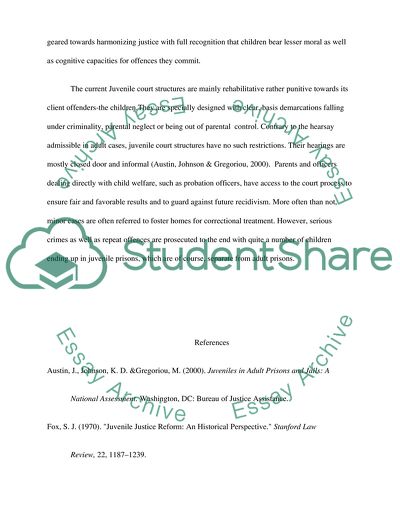Operative mechanics of Juveniles Courts Essay Example | Topics and Well Written Essays - 250 words. Retrieved from https://studentshare.org/law/1597055-operative-mechanics-of-juveniles-courts
Operative Mechanics of Juveniles Courts Essay Example | Topics and Well Written Essays - 250 Words. https://studentshare.org/law/1597055-operative-mechanics-of-juveniles-courts.


